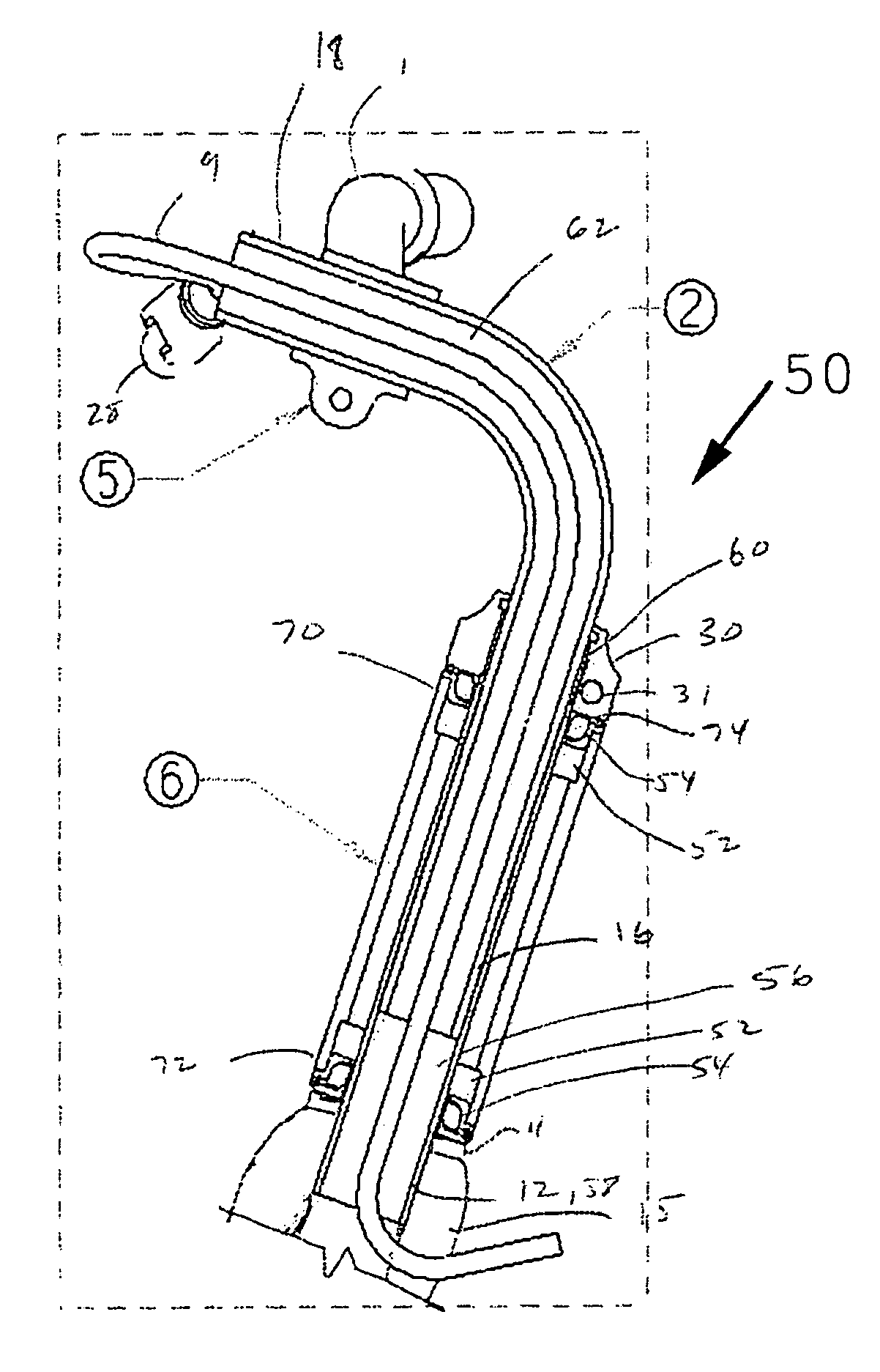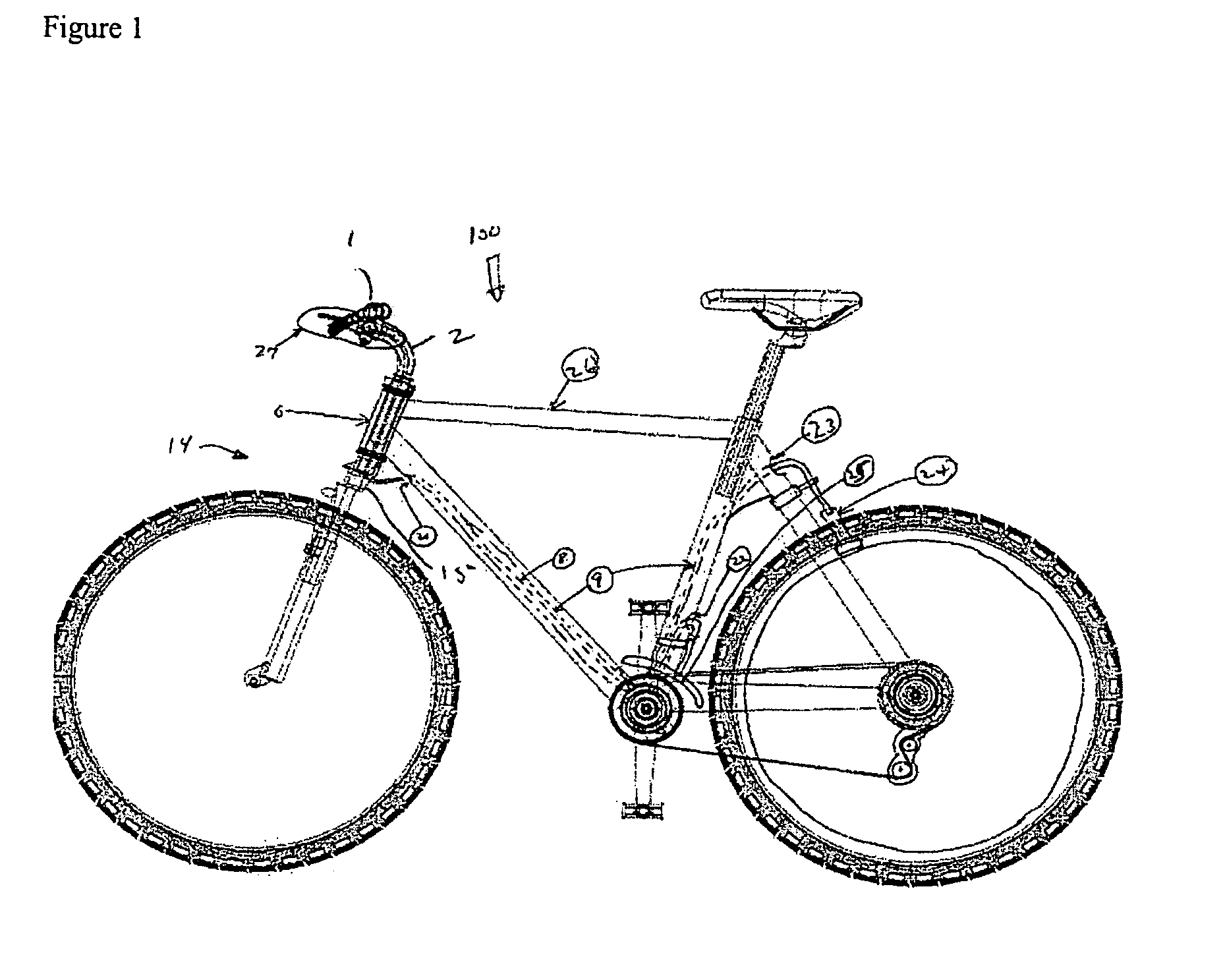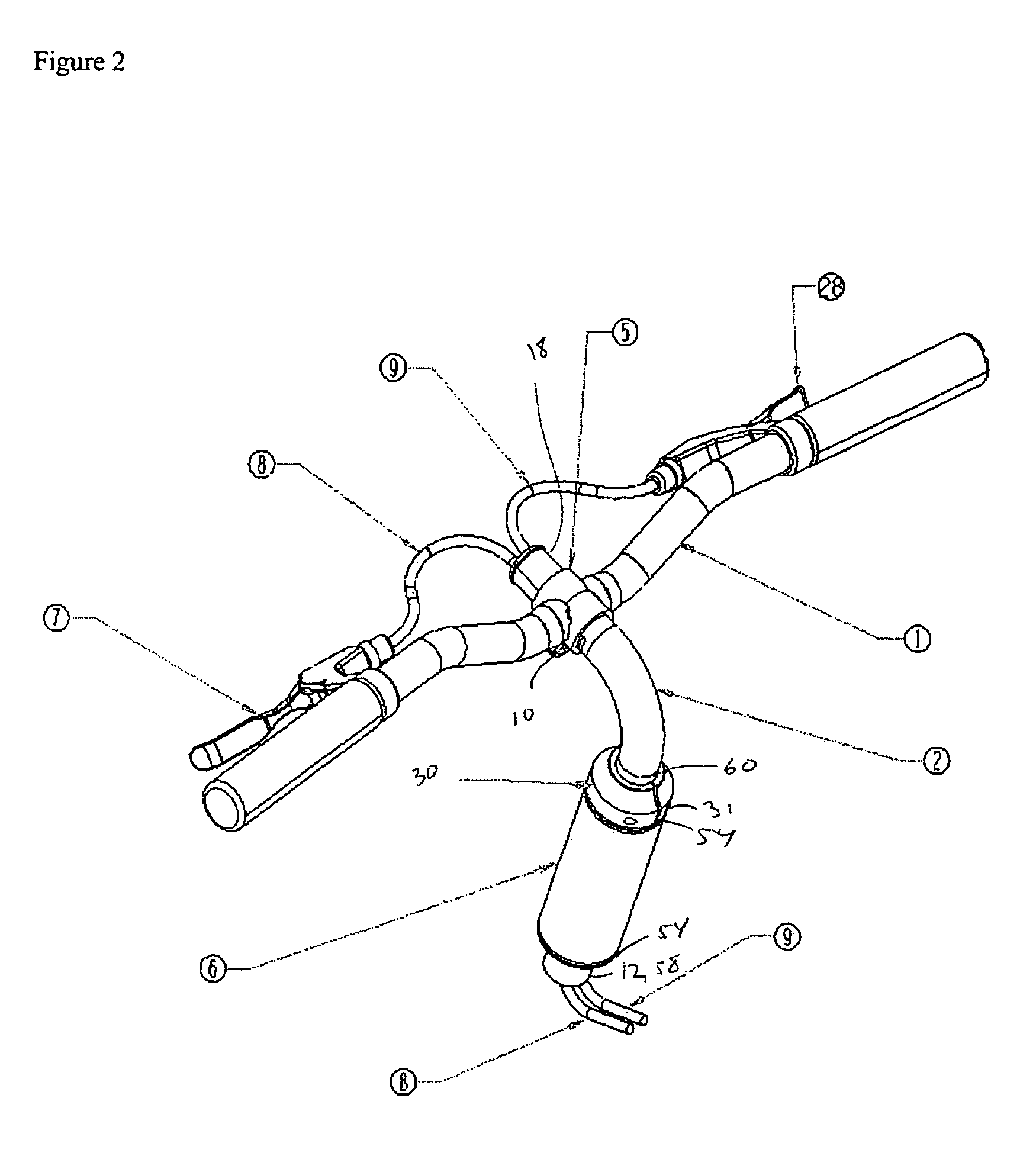Bicycle having internally routed control cables
a technology of control cables and bicycles, applied in the direction of frictional roller based transmission, steering devices, cycle equipments, etc., can solve the problems of affecting the aesthetic appearance of the frame of the frame, the damage of externally located cables, and the interference of cables with the rider or other components of the bicycl
- Summary
- Abstract
- Description
- Claims
- Application Information
AI Technical Summary
Benefits of technology
Problems solved by technology
Method used
Image
Examples
Embodiment Construction
[0018]Referring to the Figures, wherein like numerals indicate like or corresponding parts throughout the several views, the preferred embodiment of the invention consists of a bicycle 100 having a frame 26 that includes a head tube or steering head 6 that is adapted to receive a handlebar stem 2 in its upper end 70 and a fork stem or yoke 12 of a fork 14 through its lower end 72. In the preferred embodiment, the handlebar stem 2 is adjustable and may be referred to as a “gooseneck”. The particular gooseneck 2 described herein is an open-ended tube bent so that, with a first end 16 of the gooseneck 2 oriented substantially vertically, a second end 18 of the gooseneck 2 is at an angle from the vertical of greater than 45 degrees. In a preferred embodiment, the angle between the two ends 16, 18 of the handlebar stem is substantially 90 degrees, or perpendicular.
[0019]As best seen in FIG. 4, but with reference to the other Figures, the bicycle 100 has a headset 50 that includes the for...
PUM
 Login to View More
Login to View More Abstract
Description
Claims
Application Information
 Login to View More
Login to View More - R&D
- Intellectual Property
- Life Sciences
- Materials
- Tech Scout
- Unparalleled Data Quality
- Higher Quality Content
- 60% Fewer Hallucinations
Browse by: Latest US Patents, China's latest patents, Technical Efficacy Thesaurus, Application Domain, Technology Topic, Popular Technical Reports.
© 2025 PatSnap. All rights reserved.Legal|Privacy policy|Modern Slavery Act Transparency Statement|Sitemap|About US| Contact US: help@patsnap.com



